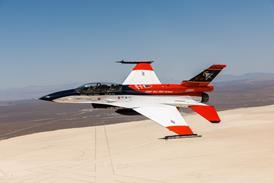Boeing has raised the maximum take-off weight (MTOW), payload and range of the 787-9 stretch, while increasing the seat-count range for all three models. The MTOW for the basic -9 will now be fixed at around 245,160kg (540,000lb), or closer to the higher- weight option offered to potential customer Qantas, and reflects customer demand for “additional performance”, says the company. The changes mean the -9 is now a longer-range model than the -8, which was previously the longest- haul variant offered to prospective 787 customers.
Boeing stresses that the 787-9 is still only “offerable” and is yet to be officially launched. Boeing 787 vice-president of sales, marketing and in-service support Marty Bentrott says that a -10 “double-stretch” version remains a possibility. The range for the 787-9 now covers the 15,900-16,280km (8,600-8,800nm) bracket, while the 787-8 and -3 versions become capable of longer ranges in the 14,800-15,725km and 5,550-6,500km brackets respectively.
Boeing has also expanded the possible seat capacity of the 787-9 up to 290 from the former upper limit of 259 originally envisaged. The -3 seating options now cover 290-330, while the -8 covers the 210-250 range. The changes have been made possible by configuration refinements led by Boeing’s payload concepts centre.
Sidewalls will be moved further out to add to cabin cross-section to make the aircraft “15in [380mm] wider than the A350. We didn’t need one layer of additional insulation blankets and, by eliminating that, we’re able to move the sidewalls out and gain an extra inch,” says Bentrott.
Noise reduction work recently undertaken by the Quiet Technology Demonstrator (QTD2) programme confirms the feasibility of removing these layers, which reduces weight as well as freeing up cabin volume, says Boeing. The variety of cabin interior options are also made possible by the advent of wireless technology which enables quick reconfiguring of in-flight entertainment systems.
Bentrott plays down reports of the baseline design exceeding its weight targets, and says compared to other efforts such as the 757, 767 and 777 at this stage in the development cycle “we are on a par, if not ahead of those programmes at this stage”.
Source: Flight International
















